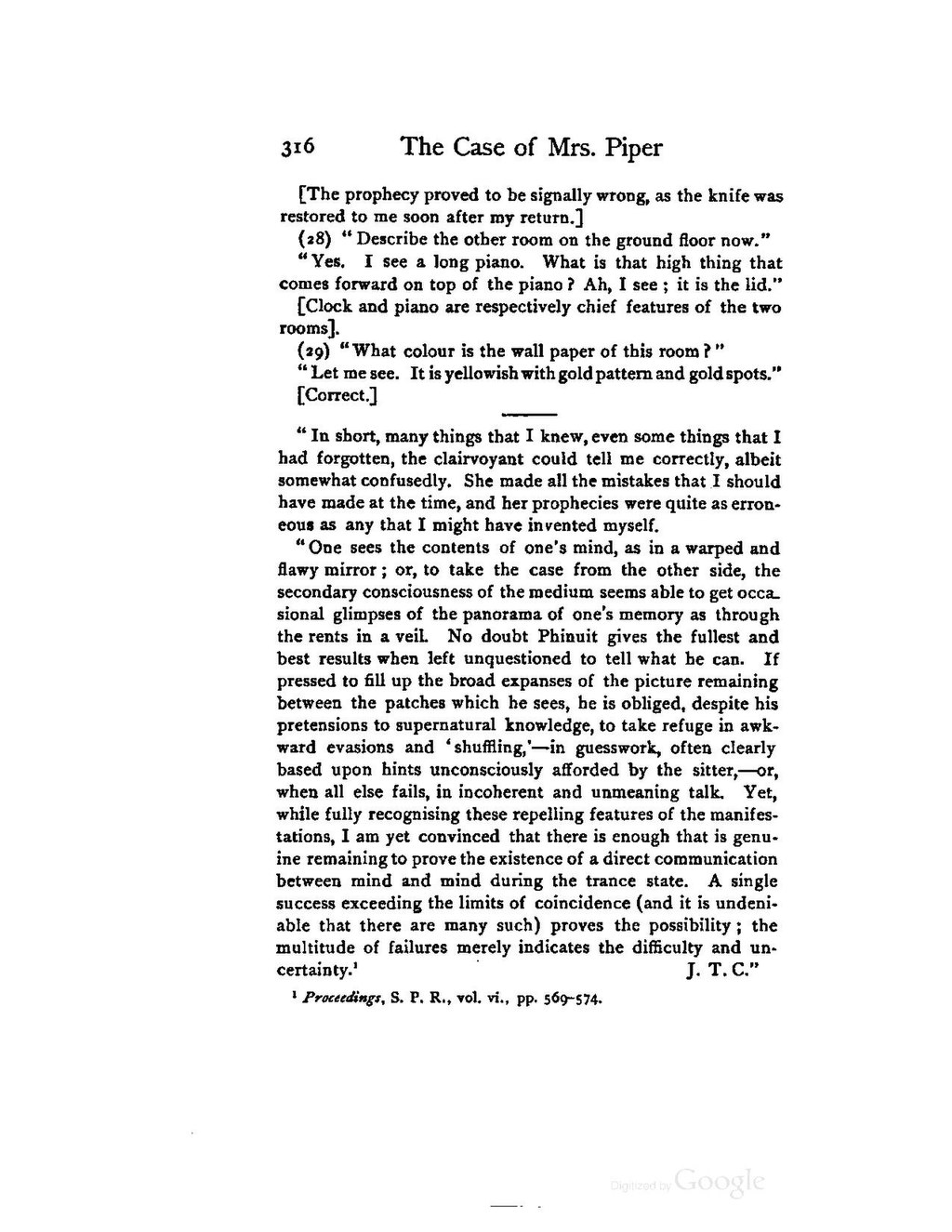[The prophecy proved to be signally wrong, as the knife was restored to me soon after my return.]
(28) "Describe the other room on the ground floor now."
"Yes. I see a long piano. What is that high thing that comes forward on top of the piano? Ah, I see; it is the lid."
[Clock and piano are respectively chief features of the two rooms].
(29) "What colour is the wall paper of this room?"
"Let me see. It is yellowish with gold pattern and gold spots."
[Correct]
"In short, many things that I knew, even some things that I had forgotten, the clairvoyant could tell me correctly, albeit somewhat confusedly. She made all the mistakes that 'I should have made at the time, and her prophecies were quite as erroneous as any that I might have invented myself.
"One sees the contents of one's mind, as in a warped and flawy mirror; or, to take the case from the other side, the secondary consciousness of the medium seems able to get occasional glimpses of the panorama of one's memory as through the rents in a veil. No doubt Phinuit gives the fullest and best results when left unquestioned to tell what he can. If pressed to fill up the broad expanses of the picture remaining between the patches which he sees, he is obliged, despite his pretensions to supernatural knowledge, to take refuge in awkward evasions and 'shuffling,'—in guesswork, often clearly based upon hints unconsciously afforded by the sitter,—or, when all else fails, in incoherent and unmeaning talk. Yet, while fully recognising these repelling features of the manifestations, I am yet convinced that there is enough that is genuine remaining to prove the existence of a direct communication between mind and mind during the trance state. A single success exceeding the limits of coincidence (and it is undeniable that there are many such) proves the possibility; the multitude of failures merely indicates the difficulty and uncertainty.[1]
- ↑ Proceedings, S. P. R., vol. vi., pp. 569–574.
